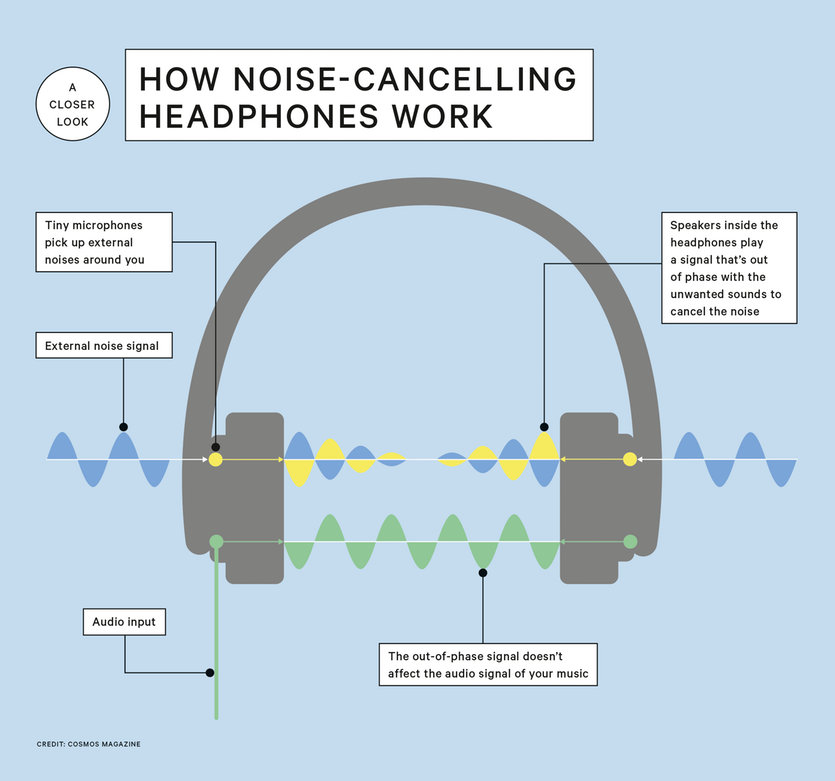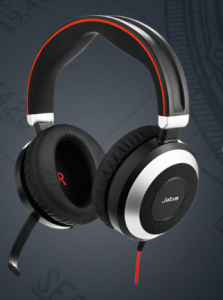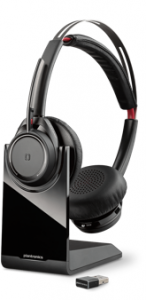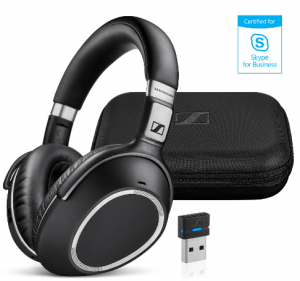Active Noise Cancellation (Control)
Active noise control (ANC), also known as active noise cancellation, or active noise reduction (ANR), is a method for reducing unwanted sound by the addition of a second sound specifically designed to cancel the first. (source – Wikipedia)
Active Noise Cancellation (ANC) is a rather new topic in the realm of Intelligent Communications Headsets, though it has been around for years in the Airline industry. We have all heard of noise cancelling microphones - which filter out noise from the room and focus solely on your voice, but that is on the "transmitting" side, ANC attempts to reduce the noise that makes it to your ears through the headset or the "receiving” side.
Picture this: You are on an airplane and wish to listen to music, a movie or podcast. You take out your earbuds and put them on to listen to your media. No matter how hard you try and no matter what volume, the noise of the plane seems to dominate the sounds making it to your ears. You can hear the people next to you talking and the person behind you snoring. These noises add up to a poor listening experience.
It’s similar if you’re in a busy office environment. Say you have to be on a conference call, but there are no quiet rooms available. You decide to sit in your cubicle or work station, and put on your Microsoft Qualified Headset and you think you’re good to go. Unfortunately, the person in the next cubicle is on a call as well, and you hear all of it – it’s quite distracting.
Standard earbuds and headsets provide a small amount of noise cancellation. This comes in the form of Passive Noise Cancellation (PNC). The simple physical attributes of the headset or earbud provide this. They do not have an active transmitter within them cancelling out the noise around you. This is where ANC comes in.
As was mentioned earlier, noise cancellation happens in 2 places. The microphone and the earpiece - or speaker (headset). For the purpose of this blog post, we will call what happens at the microphone “Noise Cancellation (NC)” and what happens at the ear piece “Active Noise Cancellation (ANC).”
To accomplish NC, the device must have at least 2 microphones built into it. One to pick up your voice and one facing away from you to pick up noise in the room. In this case, the cancellation will come from either active or passive circuitry that removes the noise picked up from the secondary microphone and subtracts it from that of the primary microphone.
ANC for headsets works the same way, with a couple of exceptions: 1) There is no primary microphone to remove sound from, and 2) ANC is always an Active technology. As I stated earlier, all headsets provide some PNC through the physical attributes of the device. Earbuds form an acoustical seal in the ear canal that help reduce the amount of external sound. Over the ear duo headsets do not provide as much passive noise cancellation but do cover more of the ear itself. Full over the ear headsets like those worn by pilots or ground personnel at the airport provide a greater form of PNC because they are typically foam filled, have hard cases and form a seal around the ear thus restricting the amount of sound that make it to the ear itself. This over-the-ear form factor combines PNC and ANC giving you the greatest amount of NC when it comes to ANC headsets. Companies like Jabra, Plantronics and Sennheiser each make a form of ANC headset of the style that was just described. But before I get you the links to them, I want to dive into the science behind ANC so that you can make the best decision when purchasing an ANC headset for use in your Intelligent Communications environment. However, the topics I speak of do carry over into personal ANC headsets as well. For example, Bose makes a number of headsets for listening to music and for the airline industry, CrazedPilot.com has a number of ANC headsets as well.
When measuring a device’s ANC ability, the amount of sound removed is typically measured in dB or decibels. Wikipedia.com defines a decibel as "a logarithmic unit used to express the ratio of one value of a physical property to another, and may be used to express a change in value (e.g., +1 dB or -1 dB) or an absolute value." Typically, 3dB of cancellation is equal to that of one half the sound level. Therefore, if you turn up the stereo in your car to a level that sounds about twice as loud, you have increased the sound by 3dB. Similarly, if you turn the sound down to what seems to be half as loud, you have reduced the sound 3dB. So, while a dB can be an absolute measurement, it is also the delta between 2 measurements. This latter definition is how we measure ANC. It deals with how much sound is reduced at each frequency.
The human ear can generally hear frequencies from 20Hz to 20Khz as depicted by the graph below. Speakers therefore are designed to reproduce sound at these frequencies. Figure 1 depicts a common speaker frequency response range.

Figure 1: Courtesy of Ecoustics.com
While speakers reproduce sound, ANC subsequently tries to produce sound exactly opposite or 180 degrees out of phase, as depicted in Figure 2. So, if you think about it, the ANC headset you are wearing is an audio amplifier as well. This constitutes the "active" portion.

Figure 2: Courtesy of Cosmosmagazine.com
Companies that produce ANC technology will refer to the level of Active Noise Cancellation in dB, therefore the larger the dB the more noise cancellation you can expect. There is one little caveat to their declaration. They will typically give you the highest dB of cancellation they provide but not tell you at which frequency that cancellation happens. In a perfect world, noise cancellation would happen evenly across the audio spectrum. However, ANC in headsets have a cancellation pattern that generally gives greater amount of cancellation at lower frequencies.

Figure 3: Courtesy of Crazedpilot.com
The graph in figure 3 shows the type of frequency response that ANC headsets give. The red line shows the level of sound at those frequencies with ANR/ANC active. While the actual noise level is not important, the delta between the black and red lines is. The arrows in this graph reference the 350Hz range. If we follow the horizontal axis it is at that frequency that we see the greatest delta, or difference between the sound with ANR on and ANR off. In this case it looks as if the black line is about 103 dBSPL and the red line is about 67 dbSPL thus giving us an ANC of 103-67=36 dB of cancellation.
Now what does all this technical jargon mean to us? Well, let’s think back to our example of the plane. The normal rumble of a plane comes in the form of lower frequencies. Therefore, if you put on and ANC headset during the flight, you would notice a considerable reduction in the "plane noise." In an office environment, sounds like that of the heating and air conditioning as well as the normal rumble of office will be considerably muted.
For Intelligent Communications headsets with ANC, check out these links.
Jabra’s Evolve 75 and Evolve 80 

Plantronics Voyager 8200 and Voyager Focus 

Comments
- Anonymous
November 27, 2017
Thank you Scott - I would point out the Sennheiser's MB660 UC MS has Adaptive ANC that monitors and meters the amount of noise cancellation you need.- Anonymous
November 27, 2017
Great point Paul. Thanks
- Anonymous
